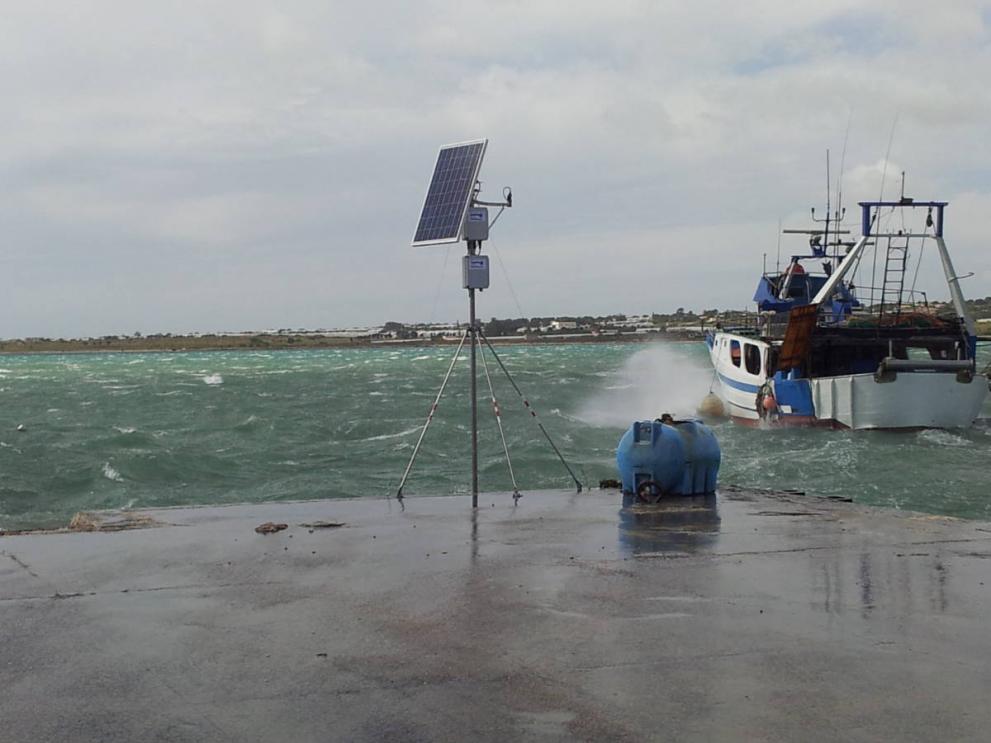
On 22 Dec 2018 13:56 UTC a tsunami was generated from the collapsing of the Anak Krakatau Volcano, with waves propagating in all directions inside the Sunda Strait, the sea portion between the Java and Sumatra islands, Indonesia.
The cause of this event seems to have a strong correlation with the ongoing volcanic eruption, particularly active since June 2018, even if no stronger eruption occurred at the time of the tsunami event.
The tsunami caused fatalities and extensive damage along the coastal areas of Sunda Strait. As of 24 Dec morning, there were at least 430 casualties (as of 27 Dec 2018), mostly in Pandeglang (Banten province, Java), 23 people missing, 7200 injured, more than 1000 structures damaged and 430 boats damaged.
Visual observations onsite and satellite images revealed that a large part of the upper cone of the volcano disappeared during the period after the tsunami and the beginning of 2019. Then the continued eruption restarted to create the flank of the volcano that is now in a standby situation.
At the time of the event the Early Warning System, currently implemented in Indonesia for tsunami of Seismic Origin, could not be used because there was no mechanism to activate the system on the basis of measurement of sea levels.
Indonesian and the JRC work together on an Emergency Early Warning system
Given the situation, the Indonesian Authorities have decided to implement an Emergency Early Warning system that can timely inform if any sea level disturbance could represent a tsunami and therefore give the possibility to activate the sirens.
JRC, in collaboration with the Indonesian tsunami Society (IATsI), the Marine Research Center of the Ministry of Marine Affairs and Fisheries (KKP) and The Meteorology, Climatology, and Geophysical Agency (BMKG) worked together since the event in December in order to design and implement an Emergency System.
IDSL - how the Emergency Early Warning system works
The new system will adopt real time fast tsunami instruments that will monitor on a 24/7 the sea level and will provide email and SMS alerts for informing about a potential event. The activation of the sirens in the area can be performed after a human verification of the signals.
The first 2 IDSL instruments (Inexpensive Device for Sea Level Monitoring, developed by JRC for tsunami identification) have been shipped to Indonesia last Monday and are currently being delivered, will be installed the last week of January. The rest of the instrumentation (other 6 devices) will be installed in March, after the first period of testing and verification.
The working mode of the emergency system is based on a number of fast response tide gauges, transmitting the sea level in ‘almost real time’ and having a software on board (or with an analysis system in the collection server), that analyses the sea level and determines if an alert must be raised.
The coincidence of two or three sea level alert can be considered as a reliable alert and can
- automatically activate the sirens in the Sunda Strait or
- issue email/SMS to a list of addresses and someone should then decide to activate the sirens.
The second case is the most conservative to avoid false alerts but some time is then lost in order to understand what is happening. Therefore the availability of tide gauges as close as possible (in terms of travel time) to the origin of the waves, is necessary.
The tide gauges will be installed in the locations as close as possible to the volcano, compatibly with the installation requirements (communication and base support).
The first two instruments will be installed on Sebesi Island, located at about 15 min of travel time of the wave from the volcano and another one doubling the existing instrument in Marina Jambu, at about 27 min of travel time.
Details
- Publication date
- 28 January 2019
